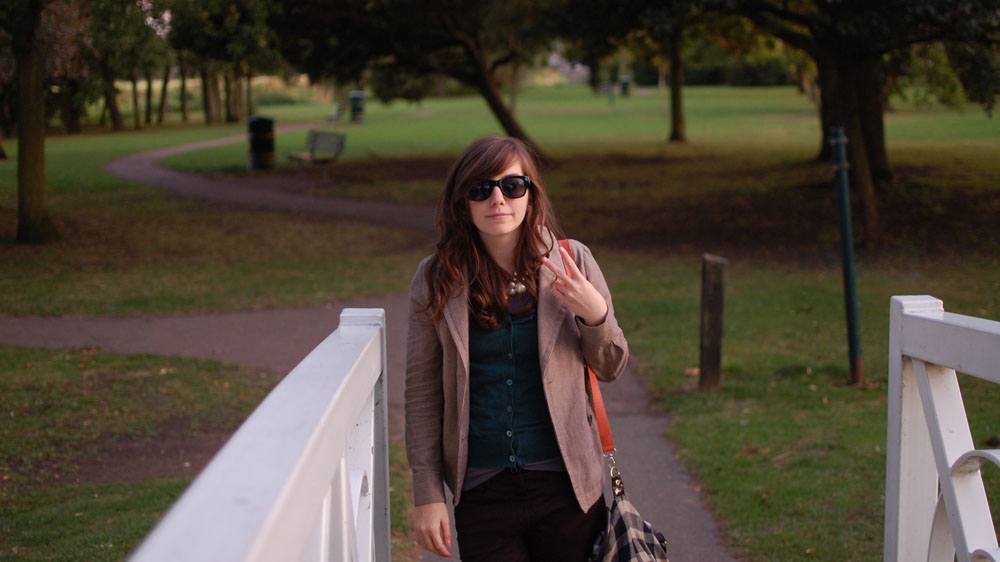The joys of fast glass
Posted on: 26 April 2010
To anyone who isn't a photographer, the title of this won't make a whole lot of sense. 'Fast glass' refers to lenses with a large maximum aperture, or in number terms, a low f-stop. I'll explain in a little more detail later on. In the past, I've talked about various photography topics including why you should get a DSLR, achieving good bokeh and why you should use off-camera flash. This post is my attempt at persuading photographers to get their hands on some fast lenses. Why? Well why not continue reading...
The reason why these particular lenses are called fast lenses is because of the large aperture, which in turn lets in a lot of light, allowing you to get away with faster shutter speeds. This is good for several reasons:
1) Soft, dreamy out-of-focus backgrounds

Demonstrated by the lovely Charlotte, the picture above shows the effect of using a large aperture (f/1.8) and having your subject close to the camera. The result - very shallow depth of field. This allows for complete subject isolation from busy backgrounds. In this case, the background is rendered completely out of focus, resulting in a smooth pastel gradient, which really makes the subject pop out. This picture was taken on the London Underground, on an escalator and was post processed in Photoshop to give a desaturated reddish tint to the image.
2) Usable shutter-speeds in low light

Another advantage to fast glass is the ability to shoot in low light. In the image above, again featuring our model Charlotte, it is late evening - around 8PM, and their isn't too much light to play with. I used the widest aperture available - f/1.8 - to let enough light in to give a hand-holdable shutter speed; in this case the camera metered 1/30th of a second. Because the subject was further away from the camera, the depth of field is larger; the background is still out-of-focus, however it is certainly discernible. The above image is unedited, except for the 16:9 crop.
3) Framing using a narrow depth of field

I touched upon this earlier, but given the very narrow depth of field that comes with using a large aperture, a combination of out of focus foreground and background elements can be used to frame the particular point of focus. In the rather flattering photo of myself above, I'm demonstrating this fact. My face is in focus, but anything in front and behind me is rendered out-of-focus.
4) More accurate focusing
Due to the fact that fast lenses let in more light, this makes it easier for the camera to auto-focus in low-light situations.
5) Sharper images
Fast lenses are known for their superior image quality and sharpness, when compared to their slower counterparts.
Conclusions
So there we have it. 5 pretty decent reasons to look into some fast glass - no pun intended ;) There is of course one common drawback with fast lenses, and that is they're almost always more expensive than the equivalent slower lenses. But in my opinion, they allow for greater creativity when you're behind the camera, not to mention flexibility. And you wouldn't want to be responsible for stunting your own creativity now would you?